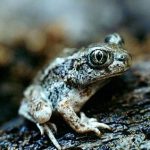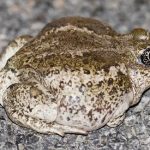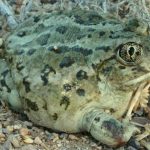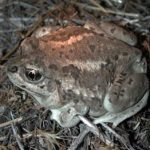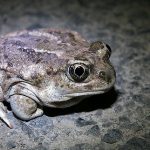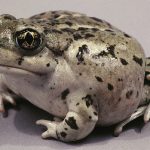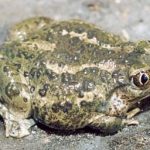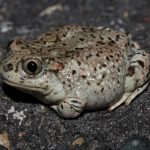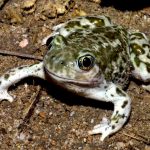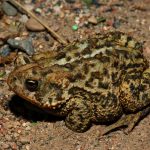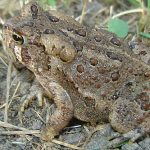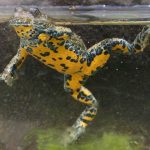Great Basin Spadefoot
Great basin spadefoot is a species of toad found in Canada and the United States.
| Kingdom | Animalia |
| Phylum | Chordata |
| Class | Amphibia |
| Order | Anura |
| Family | Scaphiopodidae |
| Genus | Spea |
| Scientific Name | Spea intermontana |
| Size | 3.8 to 6.3 cm |
| Color | Gray, olive or brown |
| Distribution | British Columbia (Canada); eastern Washington and Oregon, southern Idaho, California, Arizona, Colorado, and Wyoming ( United States) |
| Habitat | Spruce-fir forests, temperate grasslands, sagebrush flats, semidesert shrubland, deserts, agricultural areas |
| Diet | Ants, beetles, other different types of arthropods |
| Hibernation Fact | Hibernate during winter |
| Predators | Rattlesnakes, coyotes, owls |
| Breeding Season | April through July |
| Mode of Reproduction | Oviparous (egg laying) |
| Clutch Size | 300 to 500 eggs |
| Incubation Period | 2 to 4 days |
| Metamorphosis Period | 4 to 8 weeks |
| Reproductive Age | Male: 1 to 2 years of age Female: 2 years of age |
| Average Lifespan | 11 to 13 years |
| IUCN Conservation Status | Least Concern |
Great Basin Spadefoot Pictures Gallery
- Great Basin Spadefoot Images
- Great Basin Spadefoot Photos
- Great Basin Spadefoot Pictures
- Great Basin Spadefoot Toad
- Great Basin Spadefoot
- Great Basin Spadefoots
- Images of Great Basin Spadefoot
- Spea Intermontana
